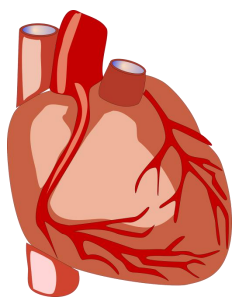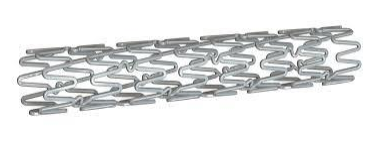Percutaneous Coronary Intervention
What is a Percutaneous Coronary Intervention (PCI)?
A PCI, in conjunction with medication, is one of two methods used in the treatment of coronary artery disease, the other being Coronary Artery Bypass Grafting (CABG).
PCI improves the blood supply to the heart muscle when narrowing and blockages are present within the coronary arteries and therefore relieves symptoms of angina. Angina usually presents itself as pain or discomfort in the chest but can radiate to the neck, jaw and arms. It can also cause shortness of breath. These symptoms usually occur during heavy physical activity and are relieved after a few minutes of rest.

Why do I need this procedure?
You may already have had a test such as a Coronary Angiogram, CT Coronary Angiogram or Cardiac MRI, to look at the main arteries (coronary arteries) which supply the heart with fresh blood and oxygen. From whichever of these tests you have had, important information has been gathered which suggests that you have narrowing of your coronary arteries. This is often caused by a build-up of fatty deposits on the artery walls. This process is known as Coronary Artery Disease (CAD).
You may have narrowing in one or more of your coronary arteries and it has been recommended that you have a procedure called a PCI to investigate this further and potentially correct the problem without undergoing major heart surgery.
What are the benefits?
PCI is a very successful procedure. Most people who suffer angina before the procedure will notice an improvement in their symptoms afterwards. If the procedure is unsuccessful then your symptoms will usually be no worse than before and additional medication may be prescribed to help with symptom control.
What to expect
You will be asked to attend a pre-assessment clinic prior to your procedure. At this appointment a nurse will carry out blood tests, swab tests and blood pressure checks and get a medical history from you. This helps medical staff identify any potential problems in advance of your admission to hospital and take steps to sort them out beforehand. You will also be given more details about the procedure, including preparation and aftercare.
On the day of the procedure you will be admitted to our day ward within the Cardiology Department where the nurse caring for you will undertake some pre-procedure checks including blood pressure, an electrocardiogram (ECG) to check your heart’s rhythm and the insertion of a small tube (cannula) into the vein in your arm. The tube is sometimes used during the procedure to give you medication. The PCI is carried out in a room called a catheter lab, which looks like an operating theatre. If you have already had an angiogram then it would have been done in the same room.
How is PCI performed?
You will be taken into the catheter lab and asked to lie flat on a table. A member of the team will attach you to a heart monitor.
During the procedure, a small flexible tube, called a catheter, is inserted into a blood vessel in your wrist or hand (radial artery) or in the top of your leg (femoral artery). It is done under a local anaesthetic, which will numb the skin where the tube is inserted. You will be awake during the test.
The catheter is then guided through the blood vessel to your heart using an x-ray camera. Once the catheter has reached your heart, the tip of the catheter is positioned into the opening of the artery to be treated. A special liquid dye (also called contrast) is then injected into the coronary artery. The dye is used because it shows up under the x-rays and the doctor can then see where the narrowing has developed in your coronary artery.
Firstly the doctor will use a very fine wire which is placed across the narrowed part of the coronary artery. Once in position, a small balloon is passed over this wire into the narrowed area. The balloon is gently inflated so that it squashes the blockage (made of fatty tissue and sometime clot) out of the way and widens the artery. Frequently the walls of the artery will recoil once the balloon is deflated; therefore a stent is implanted to keep the artery open.
If a leg artery is used, the procedure will be completed by closing the artery with an Angio-seal (a dissolvable plug). If an Angio-seal cannot be used, pressure will be applied to the area by a trained nurse or a special ‘pressure belt’ called a FemoStop. If the wrist or hand artery is used, a pressure band is placed over the puncture site and will be kept on for approximately three hours. You will then return to our recovery area where the nurses will do regular checks on your blood pressure and wound site.
What is a stent?
A stent is a metal mesh tube which has a special drug coating on it. The drug is slowly released in to the artery over time. This can help to prevent the artery from re-narrowing.
In some cases, further assessment of a narrowed section is required to determine if a stent is required or not. These techniques may include a Pressure Wire Assessment or the use of Intravascular Imaging.

What is a pressure wire assessment?
A pressure wire is a very fine wire that has a sensor built into it. The pressure wire is placed in to the coronary artery ensuring that the sensor is beyond the narrowed section. When there is a narrowing in the artery the pressure will fall. The cardiologist will then know that the narrowing is enough to reduce the flow of blood through the artery and cause you symptoms. This is then treated by inserting a stent.
What is intravascular imaging?
The imaging techniques used at this hospital use ultrasound or infrared light to create an image from the inside of the artery. The images taken give the cardiologist very detailed information about the inside of the artery and a decision about your treatment can then be made. If it is seen that the artery is tightly narrowed then this is treated by implanting a stent.
What is rotablation?
Sometimes the fatty deposits which have built up in the coronary artery can be particularly hard. This is often due to calcium build-up. Rotablation is the use of a tiny drill passed over a very fine wire. The drill is diamond tipped and is rotated very quickly inside the narrowed artery to smooth away the hard calcium. It is powered by an air compressor and sounds a bit like a dentist drill. The calcium debris is smaller than a red blood cell and washed away in the blood stream. Once rotablation is complete the cardiologist can use a balloon and stent to widen the artery.
What is shockwave?
Shockwave is another piece of equipment that can be used to treat calcium within the coronary artery. It involves passing a small balloon over a very fine wire into the narrowed section. An electrical discharge is then delivered by the balloon which creates a sonic wave, which in turn cracks the calcium. After the modification of the calcium, a balloon and stent can be used to widen the artery. Patients can sometimes get a ‘clicking’ sensation in their neck when we use this.
What are the risks of the procedure?
Complications of this procedure are rare; however, because it is invasive, they can happen:
- Bleeding – from the artery used for access (leg or wrist). This will be monitored closely by the nursing staff and treated by applying pressure
- Reaction to the dye – this is rare. You will be encouraged to drink plenty of fluid following the procedure to help ‘flush’ the dye out of your system.
- Irregular heartbeat, heart attack and stroke – this occurs in less than one in 1000 people. Serious complications may result in death
- Occasionally scar tissue forms inside the stent/s, which causes narrowing and causes your angina symptoms to return. This is called ‘restenosis’. This is rare and can be treated
- There is a small risk of a blood clot forming which could block the stent/s. To avoid this please continue taking your anti-platelet medication (Aspirin and Clopidogrel or Ticagrelor) for 12 months after the procedure, unless told otherwise by your doctor.
What about after the procedure?
- You must have someone stay with you at home for the first 24 hours following the procedure if you are discharged the same day. If the procedure is more complex than planned, we may recommend that you stay in hospital overnight
- You will be expected to refrain from any physical activity for the first week after the procedure
- You must not drive for one week following the procedure, as per the DVLA
- Your cardiologist will advise you when it is safe to return to work.
What are the alternatives to PCI?
Medication is always used to prevent further narrowing of the arteries whether a PCI is recommended or not as this helps to reduce the risk of a heart attack. Sometimes however, your cardiologist may recommend a Coronary Artery Bypass Graft (CABG) operation if a PCI is not successful, or as a better long term solution for you as an individual.
Further information
You will be able to ask questions during your pre-assessment appointment. However, if you have an urgent query you may contact the Cardiology Department on 01305 255887.
About this leaflet
Author: Laura Starr, Deputy Sister Cardiology Department
Written: January 2019
Approved and updated: April 2019, February 2025
Review date: February 2028
Edition: v1
If you have feedback regarding the accuracy of the information contained in this leaflet, or if you would like a list of references used to develop this leaflet, please email patientinformation.leaflets@dchft.nhs.uk
Print leaflet